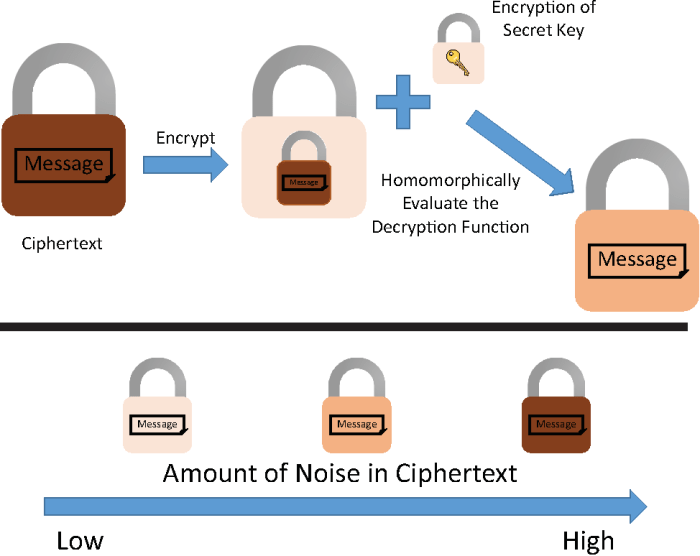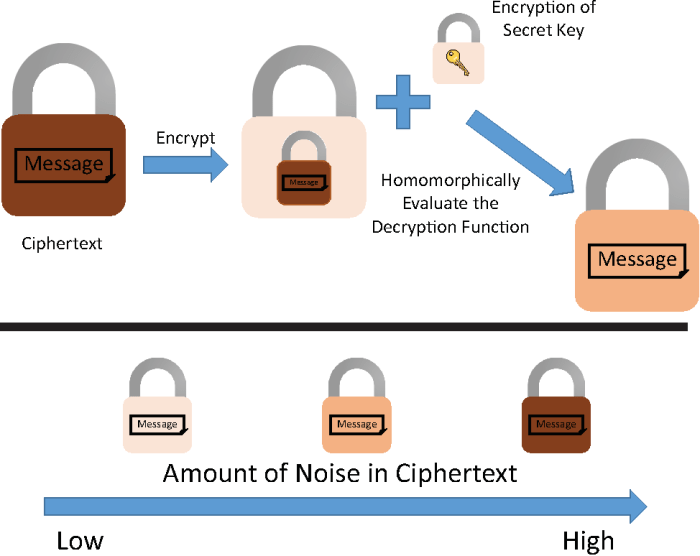Zama holy grail cryptography fully homomorphic encryption – Zama Holy Grail cryptography, also known as fully homomorphic encryption (FHE), is a revolutionary technology that allows computations to be performed on encrypted data without decryption. This groundbreaking innovation holds immense potential for transforming data privacy and security across various industries.
The concept of FHE was first theorized in the 1970s, but it wasn’t until the early 2000s that practical implementations emerged. Zama, a leading company in the field of FHE, has played a crucial role in advancing the technology, developing efficient and scalable FHE schemes.
The core principle behind Zama Holy Grail cryptography is the ability to encrypt data in a way that preserves its mathematical structure. This allows computations to be performed directly on the encrypted data, without the need to decrypt it first.
This has profound implications for data privacy, as it enables sensitive information to be processed without compromising its confidentiality. For instance, medical records can be analyzed without revealing patient identities, financial transactions can be processed without exposing account details, and machine learning models can be trained on encrypted data without compromising data privacy.
Introduction to Zama Holy Grail Cryptography

Zama Holy Grail cryptography, a groundbreaking technology developed by Zama, is a revolutionary approach to data privacy and security. It leverages the power of fully homomorphic encryption (FHE) to enable computations on encrypted data without the need for decryption. This paradigm shift unlocks unprecedented possibilities for secure data processing, analysis, and sharing in various domains, from healthcare to finance and beyond.
The Evolution of Fully Homomorphic Encryption
The concept of fully homomorphic encryption has been a long-standing goal in cryptography, dating back to the 1970s. However, its practical implementation remained elusive for decades due to the complexity of the underlying mathematical concepts and computational challenges. In 2009, Craig Gentry, a researcher at IBM, achieved a significant breakthrough by proposing the first practical FHE scheme.
This breakthrough sparked a wave of research and development, leading to advancements in efficiency and practicality.Zama plays a pivotal role in the advancement of FHE by building upon this foundation and developing innovative techniques and optimizations. The company’s expertise in cryptography, computer science, and applied mathematics enables them to push the boundaries of FHE, making it more accessible and applicable to real-world scenarios.
Key Features and Benefits of Zama Holy Grail Cryptography
Zama Holy Grail cryptography offers a unique set of features and benefits that distinguish it from traditional encryption methods.
- Homomorphic Encryption:The core principle of Zama Holy Grail cryptography lies in its ability to perform computations directly on encrypted data without decrypting it. This means that sensitive information remains protected throughout the entire processing lifecycle, even when shared with third parties.
- Data Privacy and Security:Zama Holy Grail cryptography provides an unprecedented level of data privacy and security. By keeping data encrypted during processing, it eliminates the risk of unauthorized access, breaches, or data leaks. This is particularly crucial in sensitive sectors like healthcare, finance, and government, where data breaches can have significant consequences.
- Scalability and Efficiency:Zama’s technology is designed to be scalable and efficient, enabling the processing of large datasets without compromising performance. The company’s continuous research and development efforts focus on optimizing FHE algorithms and reducing computational overhead, making it suitable for real-world applications.
- Enhanced Data Collaboration:Zama Holy Grail cryptography facilitates secure data collaboration by enabling multiple parties to perform joint computations on encrypted data without revealing their individual inputs. This unlocks new possibilities for data sharing and analysis across organizations, fostering innovation and collaboration while maintaining data privacy.
2>Technical Overview of Zama Holy Grail Cryptography
Zama Holy Grail cryptography is a fully homomorphic encryption (FHE) scheme that allows computations to be performed on encrypted data without decrypting it. This enables secure data processing in various applications, including healthcare, finance, and cloud computing.
Mathematical Principles and Algorithms
Zama’s FHE scheme is based on the mathematical principles of lattice cryptography. Lattice cryptography uses a mathematical structure called a lattice, which is a regular arrangement of points in space. The security of the scheme relies on the difficulty of solving certain computational problems related to lattices.Zama’s FHE scheme utilizes a specific type of lattice called a “ring learning with errors” (RLWE) lattice.
RLWE lattices are characterized by their complex structure and the presence of “errors” in the form of random noise. These errors are essential for ensuring the security of the encryption process.The key algorithms used in Zama Holy Grail cryptography include:
- Key Generation:This algorithm generates a pair of keys, a public key and a secret key. The public key is used for encrypting data, while the secret key is used for decrypting data.
- Encryption:This algorithm takes plaintext data as input and uses the public key to transform it into ciphertext. The encryption process involves encoding the plaintext data as a point in the RLWE lattice and then adding random noise to the point.
- Homomorphic Operations:This algorithm allows computations to be performed on encrypted data without decrypting it. The computations are performed by applying specific operations on the ciphertext, which correspond to the desired operations on the plaintext data.
- Decryption:This algorithm takes ciphertext as input and uses the secret key to transform it back into plaintext data. The decryption process involves removing the random noise from the ciphertext and then decoding the resulting point in the RLWE lattice back into plaintext data.
Encryption and Decryption Process
The encryption and decryption process in Zama Holy Grail cryptography can be summarized as follows:
- Encryption:
- The plaintext data is encoded as a point in the RLWE lattice.
- Random noise is added to the encoded point, resulting in the ciphertext.
- Decryption:
- The ciphertext is received by the authorized party.
- The secret key is used to remove the random noise from the ciphertext.
- The resulting point in the RLWE lattice is decoded back into plaintext data.
Computational Complexity and Efficiency
Zama Holy Grail cryptography is known for its high computational complexity, especially compared to traditional encryption schemes. The encryption and decryption processes involve complex mathematical operations, which can be computationally intensive, especially for large datasets.However, Zama has made significant efforts to optimize the performance of its FHE scheme.
They have developed efficient algorithms and implemented them on specialized hardware to improve the speed and efficiency of the computations.The efficiency of Zama Holy Grail cryptography is also influenced by the specific application and the type of computations being performed.
For example, performing simple operations like addition or multiplication on encrypted data is generally more efficient than performing complex operations like sorting or searching.The computational complexity of Zama Holy Grail cryptography is still a significant challenge, but ongoing research and development efforts are continuously improving its performance.
As the technology matures, it is expected to become more efficient and practical for a wider range of applications.
Applications of Zama Holy Grail Cryptography: Zama Holy Grail Cryptography Fully Homomorphic Encryption
Zama’s Holy Grail cryptography, based on Fully Homomorphic Encryption (FHE), opens up a world of possibilities for secure and private data processing. This technology allows computations to be performed directly on encrypted data, eliminating the need to decrypt sensitive information.
This breakthrough has far-reaching implications for various industries, enabling them to harness the power of data while safeguarding privacy.
Real-World Applications Across Industries
The transformative nature of Zama’s FHE solution extends across diverse industries, addressing critical challenges in data privacy and security. Here are some prominent examples:
| Industry | Use Case | Problem Solved | Zama Holy Grail Cryptography Solution |
|---|---|---|---|
| Healthcare | Secure analysis of patient medical records | Protection of sensitive patient data during research and analysis | FHE enables researchers to analyze encrypted medical records without compromising patient privacy. This allows for valuable insights into disease patterns and treatment effectiveness while maintaining confidentiality. |
| Finance | Secure credit scoring and risk assessment | Preservation of financial data privacy while enabling accurate risk assessment | FHE enables financial institutions to perform credit scoring and risk assessment calculations on encrypted data, protecting sensitive financial information from unauthorized access. |
| Government | Secure data sharing and analysis for public policy development | Enhanced data privacy and security in collaborative initiatives | FHE facilitates secure data sharing and analysis between government agencies, allowing for collaborative policy development while maintaining data confidentiality. |
| Retail | Personalized recommendations and targeted marketing without compromising customer data | Preservation of customer privacy while enabling effective marketing strategies | FHE allows retailers to generate personalized recommendations and target marketing campaigns based on encrypted customer data, protecting customer privacy while enhancing customer experience. |
Benefits and Advantages
Zama’s Holy Grail cryptography offers numerous benefits, including:
- Enhanced data privacy: FHE allows computations to be performed on encrypted data, preventing unauthorized access to sensitive information.
- Improved security: FHE provides a robust layer of protection against data breaches and cyberattacks.
- Increased trust: FHE fosters trust among stakeholders by ensuring data privacy and security.
- Expanded data utilization: FHE enables organizations to leverage their data for valuable insights without compromising privacy.
- Compliance with regulations: FHE helps organizations comply with data privacy regulations such as GDPR and HIPAA.
Advantages and Limitations of Zama Holy Grail Cryptography
Zama Holy Grail cryptography, a revolutionary technology in the realm of privacy-enhancing technologies, offers a compelling approach to data security and privacy. It allows computations to be performed on encrypted data without decrypting it, unlocking a world of possibilities for secure data processing and analysis.
However, like any emerging technology, it comes with its own set of advantages and limitations.
Comparison with Other Privacy-Enhancing Technologies
Zama Holy Grail cryptography stands out among other privacy-enhancing technologies due to its unique capabilities. It offers a more comprehensive solution compared to differential privacy and multi-party computation, providing a higher level of security and privacy.
- Differential Privacyadds noise to data to protect individual information, but it can compromise the accuracy of the results. Zama Holy Grail cryptography, on the other hand, maintains data integrity while preserving privacy.
- Multi-Party Computationallows multiple parties to jointly compute on data without revealing their individual inputs. However, it can be complex to implement and requires a high level of trust among participating parties. Zama Holy Grail cryptography simplifies the process and reduces the reliance on trust.
Advantages of Zama Holy Grail Cryptography
Zama Holy Grail cryptography offers significant advantages in terms of security, privacy, and usability.
- Enhanced Security: Zama Holy Grail cryptography enables secure data processing and analysis without exposing sensitive information. This eliminates the risk of data breaches and unauthorized access, ensuring the confidentiality and integrity of data.
- Unparalleled Privacy: By allowing computations on encrypted data, Zama Holy Grail cryptography protects individual privacy while facilitating data sharing and collaboration. This empowers individuals to control their data and participate in data-driven initiatives without compromising their privacy.
- Improved Usability: Zama Holy Grail cryptography simplifies data processing and analysis, making it more accessible to a wider range of users. Its user-friendly interface and intuitive tools enable even non-technical users to leverage the power of secure data analytics.
Limitations and Challenges
While Zama Holy Grail cryptography offers significant advantages, it also faces certain limitations and challenges.
- Performance Overhead: Performing computations on encrypted data can be computationally intensive, leading to performance overhead. This can be a challenge in real-time applications where speed is critical.
- Complexity: Zama Holy Grail cryptography is a complex technology that requires specialized expertise to implement and manage. This can pose a barrier to adoption for organizations with limited technical resources.
- Scalability: Scaling Zama Holy Grail cryptography to handle large datasets and complex computations can be challenging. This requires efficient algorithms and optimized infrastructure to ensure scalability and performance.
Future Directions and Research Opportunities

Zama Holy Grail cryptography, while a significant advancement in the field of fully homomorphic encryption (FHE), continues to evolve with ongoing research and development. This section explores potential future advancements and research directions, highlighting opportunities to enhance the performance, efficiency, and usability of Zama’s FHE scheme.
We’ll also examine emerging applications and use cases in areas like artificial intelligence and blockchain technology.
Performance Enhancements and Efficiency Improvements
Optimizing performance and efficiency remains a critical focus for FHE research. Zama’s Holy Grail cryptography, like other FHE schemes, faces challenges related to computational overhead and latency. Several research avenues hold promise for addressing these limitations:
- Hardware Acceleration:Leveraging specialized hardware, such as FPGAs and ASICs, can significantly accelerate FHE computations. Dedicated hardware can be designed to efficiently handle the complex mathematical operations involved in FHE, leading to faster execution times and reduced resource consumption. This approach has shown promise in recent research, and Zama could explore collaborations with hardware vendors to develop optimized FHE accelerators.
- Algorithm Optimization:Continual refinement of the underlying FHE algorithms can improve performance. Research efforts are focused on developing more efficient encryption and decryption algorithms, as well as optimizing key generation and homomorphic operations. Zama could invest in research to explore new algorithms and techniques that minimize computational complexity and enhance efficiency.
- Bootstrapping Optimization:Bootstrapping, a crucial process for maintaining the homomorphic properties of FHE schemes, is computationally intensive. Researchers are actively investigating techniques to reduce the computational cost of bootstrapping. Zama could explore advancements in bootstrapping optimization, potentially leading to significant performance improvements.
Expanding Applications and Use Cases, Zama holy grail cryptography fully homomorphic encryption
The potential applications of Zama Holy Grail cryptography are vast and continue to expand as the technology matures. Emerging use cases are particularly promising in domains such as artificial intelligence and blockchain technology:
- AI and Machine Learning:FHE can enable privacy-preserving machine learning by allowing models to be trained and used on encrypted data. Zama’s Holy Grail cryptography could be employed in applications like medical diagnostics, financial fraud detection, and personalized recommendation systems, where sensitive data needs to be protected.
For example, a hospital could train a machine learning model to identify patients at risk for certain diseases without compromising the privacy of their medical records. This capability has the potential to revolutionize healthcare by allowing for the development of powerful AI models while safeguarding patient data.
- Blockchain Technology:FHE can enhance privacy and security in blockchain systems. Zama’s Holy Grail cryptography could be used to encrypt transactions and smart contracts, preventing unauthorized access and ensuring data confidentiality. This approach could be particularly valuable in decentralized finance (DeFi) applications, where financial transactions need to be secure and transparent.
For instance, a DeFi platform could use FHE to encrypt user data and transactions, ensuring that only authorized parties have access to sensitive information while maintaining transparency and auditability.
Improving Usability and Accessibility
While Zama Holy Grail cryptography holds great promise, its practical adoption is currently hindered by complexity and limited accessibility. Addressing these challenges is crucial for wider adoption:
- Simplified Development Tools and Libraries:Developing user-friendly tools and libraries can make FHE more accessible to developers. Zama could invest in creating intuitive APIs and frameworks that simplify the integration of FHE into existing applications. This would lower the barrier to entry for developers and encourage wider adoption.
- Education and Training Resources:Providing comprehensive educational resources and training programs can empower developers to effectively use FHE. Zama could develop online courses, tutorials, and documentation to educate developers on the principles and applications of FHE. This would foster a more skilled workforce capable of leveraging the technology.


